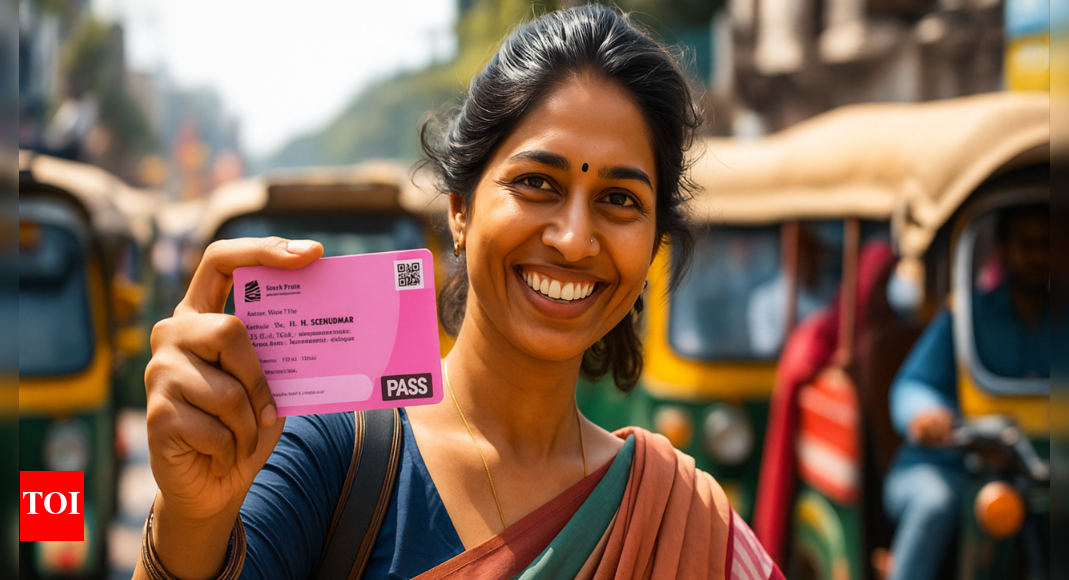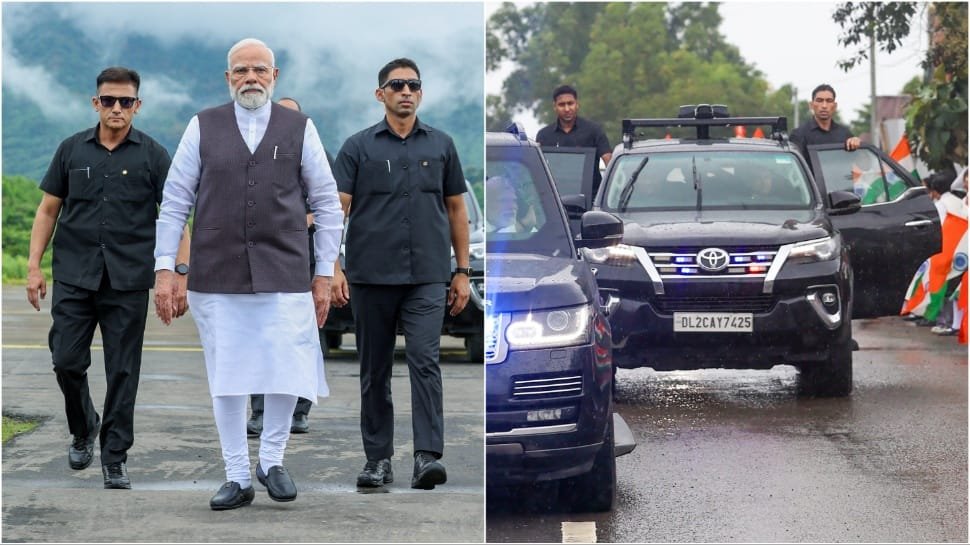Travel Guides & Articles
India and China Renew Direct Flights After Five Years, Redefining Connectivity and Building Stronger Diplomatic, Economic, and Tourism Bridges Between the Two Nations

Published on
August 13, 2025
India and China Have Restarted their Direct Flight Services after Five Years. This important step will also open a new chapter in relations between the two countries, intensify mutual diplomacy and economic cooperation, as well as facilitate tourism exchanges. The loss of direct flights in 2020 following the initial flare-up of the COVID-19 pandemic, however, forced both sides to use connecting flights via other hubs, boosting travel times and costs. The reintroduction of these direct routes will not only make business travel and aspects of cultural exchange more easily achievable, but also offer new opportunities for trade and collaboration. It highlights the growing bilateral convergence which offers a historic opportunity for to transform their strategic partnership into an architect of a more integrated and active future.
India and China Move Toward Resuming Direct Passenger Flights
India and China are actively engaged in discussions to restart direct passenger flights, with services potentially resuming as soon as next month. This development, reported by Bloomberg citing sources familiar with the ongoing negotiations, marks a significant step toward restoring air connectivity between the two most populous nations in the world. The suspension of direct flights, which has lasted since the onset of the Covid-19 pandemic, has caused significant disruptions to travelers, forcing them to use indirect routes via transit hubs like Hong Kong or Singapore. The planned reopening of these air routes has both logistical and geopolitical significance, signaling a thaw in relations between the two countries.
Resumption of Direct Flights Between India and China: A New Chapter in Bilateral Relations
Before the pandemic, India and China had a robust air travel network, with major carriers such as Air India, IndiGo, Air China, and China Southern Airlines operating direct routes between key cities. However, the Covid-19 crisis led to the abrupt suspension of these flights as part of the broader travel restrictions imposed worldwide. This disruption left both nations without an easy air link, making long-haul journeys more time-consuming and costly. As a result, passengers traveling between the two countries were forced to rely on indirect connections, passing through other major Asian hubs like Singapore, Hong Kong, and Bangkok.
Now, as the pandemic has receded and international travel resumes, both India and China are working on an agreement to restart direct flights. According to sources, Indian airlines have been instructed to stand ready for flights to China on short notice. A formal announcement regarding the resumption of services is expected to be made during the Shanghai Cooperation Organisation (SCO) summit, which is set to take place in China at the end of August. This timing could coincide with broader diplomatic discussions between India and China, potentially laying the foundation for enhanced cooperation in various sectors.
Tourism Boost: Beyond Leisure
While the volume of leisure travel between India and China may not match that seen in other regional pairings, the resumption of direct flights is expected to give a significant boost to niche tourism sectors. Cultural exchanges, heritage tours, and business tourism are expected to see growth as both nations become more accessible to each other’s citizens. These areas of tourism benefit from improved travel links, and the revival of direct flights will likely lead to an increase in tourism-related activities, supporting a stronger people-to-people connection.
Moreover, the restoration of air services reflects the growing willingness of both countries to put aside differences and strengthen engagement in areas where mutual benefits are clear. This move is a sign that India and China are keen to explore avenues for collaboration, particularly in trade, tourism, and education, amidst ongoing efforts to resolve geopolitical differences.
Routes and Airline Involvement
India’s major airlines, such as Air India and IndiGo, have been urged to fast-track plans to resume flights to China. These airlines, along with their Chinese counterparts, are expected to lead the charge in reinstating direct services. Initial routes are likely to include major cities like Beijing, Shanghai, and Guangzhou, with New Delhi–Beijing, New Delhi–Shanghai, and Mumbai–Guangzhou being some of the key routes under consideration.
As relations between the two countries continue to improve, there are expectations that more flights will be added to the network. Cities like Bengaluru could potentially be incorporated into the new routes as demand increases. The frequency of initial services is expected to be moderate, with three to four flights per week, expanding over time based on passenger demand.
This renewed connectivity could also pave the way for further cooperation between India and China in various sectors, setting a positive precedent for future diplomatic and economic engagements.
Airline Preparations and Challenges
Indian aviation authorities, along with major airlines like Air India and IndiGo, have been briefed about the possibility of restarting services to China, although they have yet to comment publicly on the matter. The exact timeline for the resumption of flights remains uncertain. While progress has been made in recent weeks, including updates for airlines on the situation, the negotiations still face several challenges. These could include logistical issues, regulatory hurdles, and potential diplomatic sensitivities.
The resumption of air services will also depend on health and safety protocols, particularly as concerns related to Covid-19 and its variants remain global priorities. India and China will likely have to align their health measures for travelers, including testing requirements, quarantine protocols, and vaccination policies. Given the complex nature of these regulations, the resumption of direct flights could still face delays if there are any discrepancies in these areas.
Conclusion: Bridging an Economic Corridor
India and China marked a watershed moment this week as well after air links between the world’s two most populous countries were re-established for the first time in more than five years. By doing this, diplomatic relations are more strongly formed and economic cooperation as well as tourism exchanges are enhanced strengthening the importunity of a closer future.
Travel Guides & Articles
Delhi’s Bhai Dooj gift: Pink Card registration to begin from mid October; free bus travel for women

The Delhi government is set to launch the registration process for its Pink Card, a lifetime free bus travel pass for women, from mid-October, as a Bhai Dooj gift to the women of the national capital.According to a senior transport department official, the Pink Card will be valid for a lifetime and aims to make public transport easier and more accessible. The initiative will replace the existing paper-based ticket system with the ‘Saheli Smart Card’, described as a permanent and personalised pass designed to provide women with unrestricted and secure travel on government-run buses.He said registration for the card is expected to begin in October, allowing “Delhi’s daughters and sisters to avail unlimited free travel as a token of the government’s commitment towards their welfare.” The exact launch date and procedure will be finalised in a meeting scheduled for the coming week.The card will also enhance safety and reduce inconvenience by eliminating the need for daily paper tickets, offering instead a hassle-free smart card.Plans for the Saheli Smart Card were first outlined in July. At the time, officials confirmed that it would carry the holder’s name and photograph and would be available to women and transgender residents of Delhi aged 12 years and above. The card, issued under the National Common Mobility Card (NCMC) framework, will allow free travel on all DTC and Cluster buses and can also be recharged and used across other transit services.“To obtain the card, applicants must be bona fide residents of Delhi, aged 12 years or above, and have valid proof of address. They must register online through the DTC portal, select a participating bank, and complete full KYC verification at the chosen bank branch,” the official told PTI.The list of required documents includes Aadhaar, PAN, proof of residence in Delhi, a passport-size photograph, and any additional paperwork specified under the bank’s KYC norms. Once the KYC process is completed, the issuing bank will dispatch the card directly to the applicant’s registered address.The Delhi government has invited Expressions of Interest (EoI) from banks and financial institutions to support the card’s roll-out. Officials clarified that while the government will not charge users for the free travel scheme, banks may impose a small fee for issuing or maintaining the card. In the event of loss, the cardholder must inform the issuing bank, which may replace it under its own policies.Before it can be used, the card must be activated through the Automatic Fare Collection System (AFCS) of DTC. While topping up will enable use across other public transport services, the free travel facility will apply only to DTC and Cluster buses.“No card will be issued directly by DTC. Registration is completely online through the DTC portal, and cards are issued only after full KYC verification by the selected bank,” the official added.The chief minister has previously criticised the old pink ticket system, introduced under the AAP government, arguing that it was prone to corruption.
Travel Guides & Articles
Why Did PM Modi Travel By Road To Churachandpur After Ditching chopper, What Did He Say To A State Divided By Violence? | India News

Prime Minister Narendra Modi, who made his first trip to Manipur after the ethnic unrest started in 2023, drove into Churachandpur on Saturday after his scheduled helicopter flight was postponed because of incessant rain. The prime minister was initially supposed to fly from Imphal to the Kuki-dominated district but chose the 90-minute drive to reach the waiting crowds.
On his arrival, Modi thanked the people who defied the rain to receive him. “I was glad that I couldn’t take the helicopter because I had the chance to see the love and affection showered on the people of Manipur on the way. I bow my head to them with gratitude,” the prime minister told a gathering.
An Appeal for Peace and Reconciliation
Speaking at an event at the venue, PM Modi made a strong call for stability and peace in the war-torn state. He called on all ethnic groups, specifically the Meitei and Kuki people, to stop the violence and seek a peaceful future.
“I urge all the communities to walk on the path of peace to realize their aspirations and ensure their children’s future,” the prime minister said. “Today, I assure you that I am on your side. The government of India is on the side of the people of Manipur.”
Development Projects and Resettlement Plan
During his tour, PM Modi inaugurated 19 development projects worth around ₹7,300 crores whose foundation stones he laid. He said that these would enhance the living conditions of local people, particularly the hilltop tribal communities. The projects include improvements in urban infrastructure, roads, drainage, and healthcare facilities.
The prime minister also promised proper rehabilitation and resettlement of the almost 60,000 individuals uprooted by the conflict since May 2023. He reaffirmed the commitment of the central government towards restoring enduring peace and normalcy to the state.
ALSO READ | ‘Will Pave Way For Peace, Stability And Prosperity In Nepal’: PM Modi On Sushila Karki’s Appointment As PM
Travel Guides & Articles
Are UAE airports rejecting passengers over minor passport damage? Here’s why this matters for your travel plans | World News

Travellers flying from the UAE are being warned: even a slightly worn passport can now stop you from boarding. As immigration and airline checks tighten, minor wear and tear, such as frayed edges, water stains, or a scratched chip, is enough to get a valid passport rejected, regardless of visa status.
Passport wear can mean denied boarding, even with a valid visa
International travellers departing from Dubai, Abu Dhabi, and Sharjah are facing increased scrutiny over the physical condition of their passports. UAE-based airlines are now enforcing stricter rules, often stopping passengers at check-in if their passports show even minor damage, regardless of visa validity or passport expiry date. Common types of damage that can raise red flags include:
- Frayed corners
- Torn pages
- Water or coffee stains
- Loose binding
- Scratched or faulty data chips
- Peeling laminate
- Visible smudges, especially on the photo page
Authorities say these issues, though sometimes minor, may compromise embedded security features such as microchips, holograms, and machine-readable zones. If these features are damaged, passport scanners may fail, leading to suspicion of forgery or tampering by immigration officers. Airlines departing from the UAE are also held accountable. If a passenger is denied entry due to passport condition, the airline may face penalties or be required to bear the cost of deportation. This has made airlines extra cautious at the check-in stage, often barring travellers with visibly damaged passports from boarding at all.
Countries with the strictest passport integrity checks
While the UAE is leading this push for pristine passports, other countries are also enforcing similar measures. The following nations are particularly strict about the condition of travel documents:
- United Arab Emirates:
Passports with loose pages, damage to the binding, deep creases, or water exposure can be flagged. Airline staff are instructed to examine documents closely before allowing boarding. - Indonesia:
Even a 1-centimetre tear in any passport page may lead to refusal of entry. Indonesian immigration officers maintain a zero-tolerance approach toward damaged documents. - Thailand & Vietnam:
Any form of water damage, especially on the photo page, can result in entry denial. Cosmetic flaws are taken seriously. - United States:
Given the reliance on biometric verification and chip scanning, a scratched or non-functional chip can render a passport invalid. Border officials treat compromised passports as potential forgery risks. - Australia:
Immigration guidelines advise travellers to avoid flying with passports that show visible damage of any kind. Airline personnel have the discretion to deny boarding at check-in.
What counts as “damaged” and when to replace your passport
Officials generally split passport damage into two categories:
- Partially Damaged:
The personal details and photo remain legible, but the document has torn pages, stains, or surface damage. Even in this state, rejection is still possible at check-in or immigration. - Severely Damaged:
The passport’s photo or key information is obscured or unreadable. This renders the document unusable for international travel.
Even a partially damaged passport can lead to denial of boarding or entry. Travellers are strongly advised to renew their passport at the first signs of wear, before problems occur. Prevention is key: keeping the document dry, using a protective cover, and avoiding inserting papers or folding the passport helps maintain its integrity.
Why authorities are so strict, the risk of tampering
Modern passports are more than just identification; they are high-security documents embedded with:
- Microchips
- Holograms
- Machine-readable zones
Damage to any of these features can cause technical issues at automated border control gates or manual inspection points. A passport that fails to scan correctly could appear tampered with, triggering suspicion and potential detainment. Officials emphasize that the strict enforcement is to protect national security and maintain document integrity. With the rise in identity fraud and document forgery, immigration systems are designed to flag any inconsistencies, no matter how small.
-

 Business2 weeks ago
Business2 weeks agoThe Guardian view on Trump and the Fed: independence is no substitute for accountability | Editorial
-
Tools & Platforms1 month ago
Building Trust in Military AI Starts with Opening the Black Box – War on the Rocks
-

 Ethics & Policy2 months ago
Ethics & Policy2 months agoSDAIA Supports Saudi Arabia’s Leadership in Shaping Global AI Ethics, Policy, and Research – وكالة الأنباء السعودية
-

 Events & Conferences4 months ago
Events & Conferences4 months agoJourney to 1000 models: Scaling Instagram’s recommendation system
-

 Jobs & Careers2 months ago
Jobs & Careers2 months agoMumbai-based Perplexity Alternative Has 60k+ Users Without Funding
-

 Podcasts & Talks2 months ago
Podcasts & Talks2 months agoHappy 4th of July! 🎆 Made with Veo 3 in Gemini
-

 Education2 months ago
Education2 months agoVEX Robotics launches AI-powered classroom robotics system
-

 Education2 months ago
Education2 months agoMacron says UK and France have duty to tackle illegal migration ‘with humanity, solidarity and firmness’ – UK politics live | Politics
-

 Podcasts & Talks2 months ago
Podcasts & Talks2 months agoOpenAI 🤝 @teamganassi
-

 Funding & Business2 months ago
Funding & Business2 months agoKayak and Expedia race to build AI travel agents that turn social posts into itineraries





















